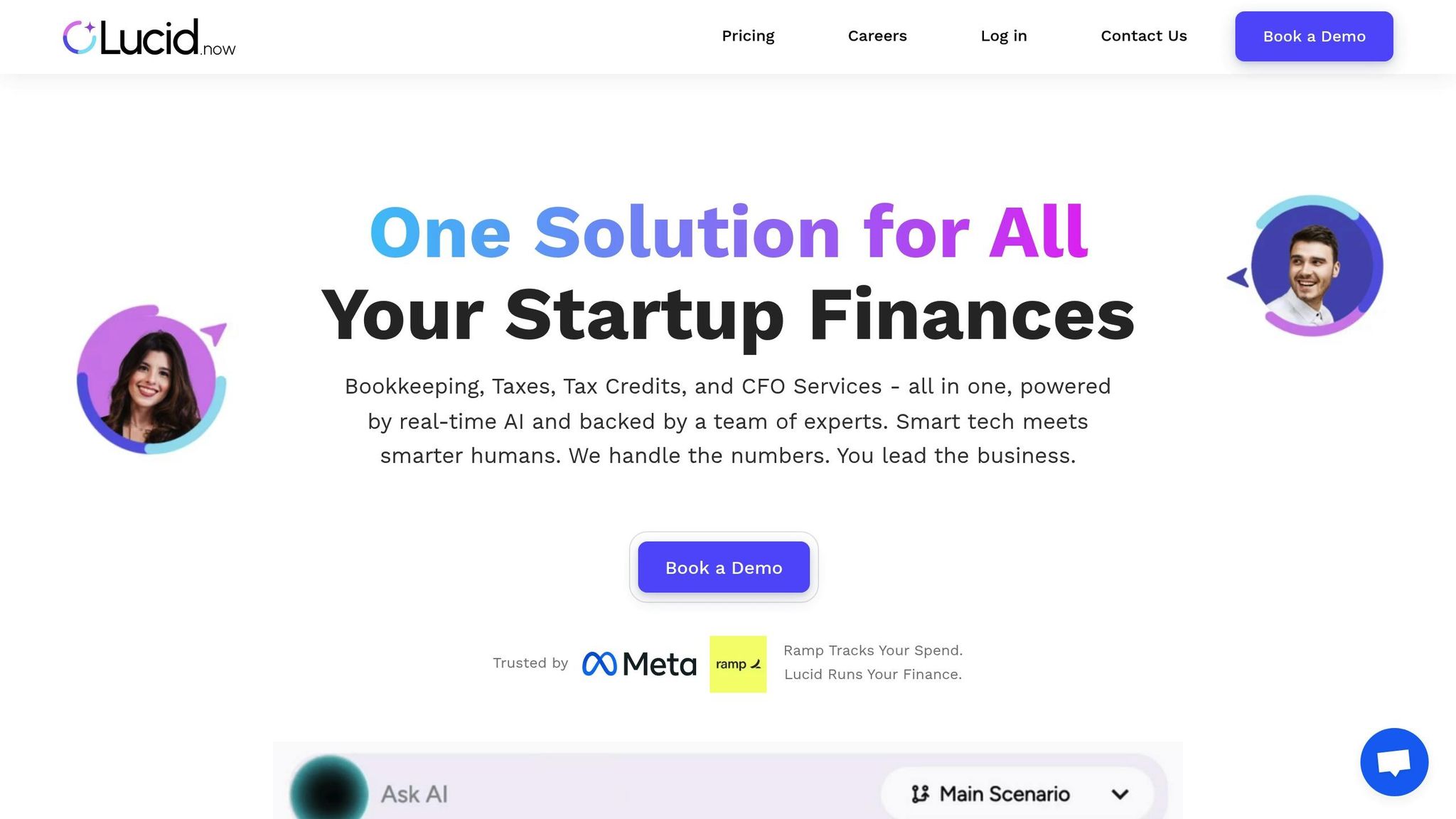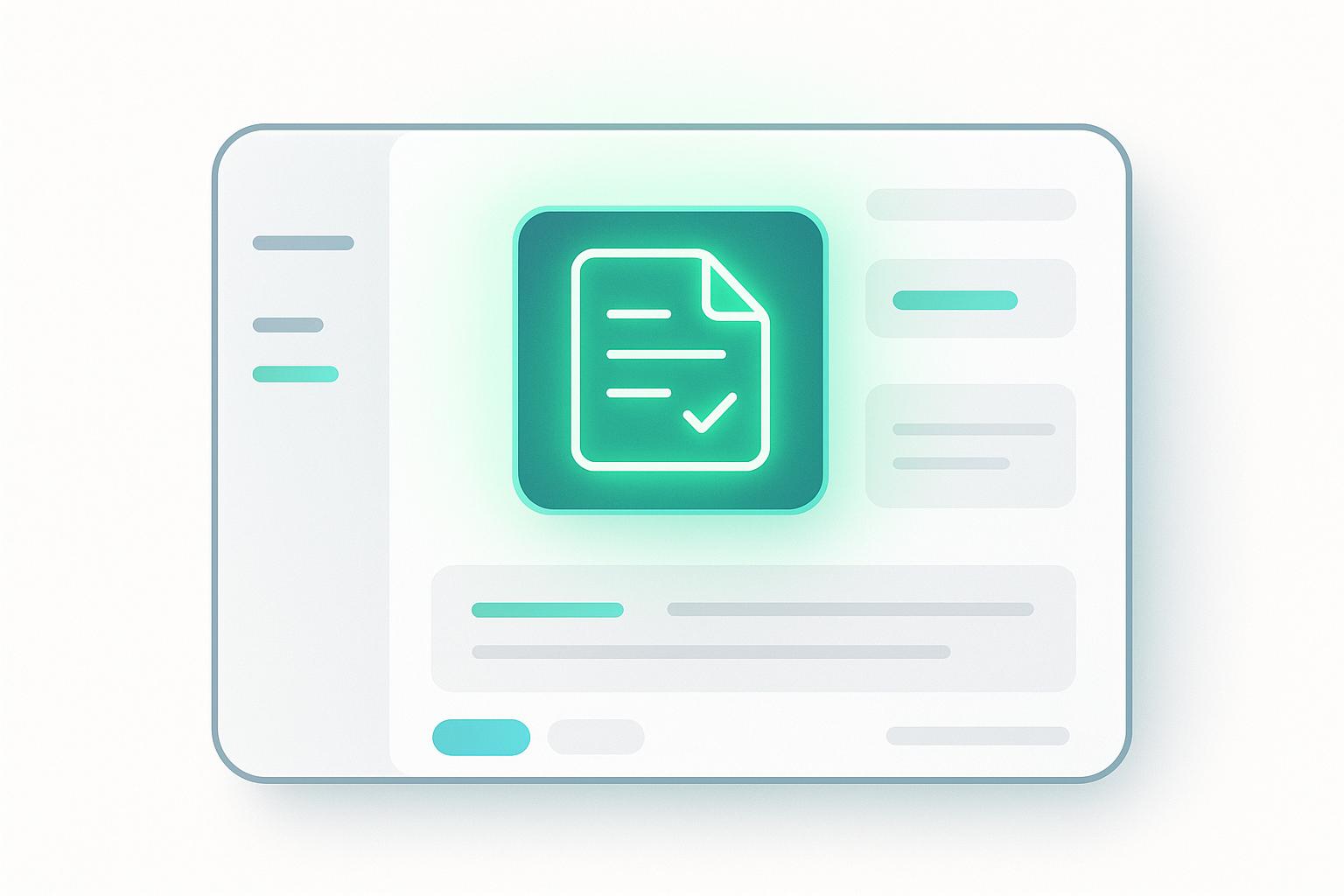AI segmentation can boost startup revenue by 10–15%, reduce customer acquisition costs by 30%, and improve retention rates by 25%. It achieves this by analyzing customer behavior in real time, creating precise customer groups based on actions, not outdated demographics.
Startups face common challenges like cash flow issues, misreading market demand, and inefficient resource allocation. Basic segmentation methods, which rely on static data like age or income, fail to address these problems. They’re slow, outdated, and often lead to wasted marketing spend.
AI segmentation solves these issues by:
- Targeting customers with precision: AI identifies high-value customer groups based on behavior, not assumptions.
- Real-time updates: Customer segments evolve continuously, keeping strategies relevant.
- Cost efficiency: Automated processes save time and reduce errors.
For example, companies using AI segmentation report a 23% increase in conversion rates and a 15% rise in customer lifetime value. Tools like Lucid Financials integrate segmentation data with financial operations, helping startups track revenue impact and make faster decisions.
If you're a startup, AI segmentation isn't just helpful - it’s a smarter way to scale your business while maximizing every dollar spent.
How to use AI to find and prioritize untapped market segments
Problems with Basic Segmentation Methods
To understand why startups need smarter solutions, let’s first look at where traditional segmentation falls short. These older methods rely on surface-level data and static criteria, which often fail to adapt to real-world changes. The result? A 5% drop in customer engagement and a 3% decline in sales.
The main problem lies in their approach. Traditional segmentation focuses on broad categories like age, gender, or location, rather than digging deeper into transactional behaviors such as how often customers buy or how much they spend.
Fixed Segmentation Creates Missed Opportunities
Static segmentation assumes that customers behave the same way over time, which is rarely the case. By using rigid criteria - like past purchases or demographics - businesses risk overlooking important shifts in customer behavior. For instance, a startup might label its audience as "millennials interested in tech products" based on old data. But what happens if those same customers start spending on home improvement during a housing boom or shift to health and wellness products after a major life event? The outdated segmentation becomes irrelevant.
This misalignment has a direct impact on marketing performance. Campaigns that don’t target the right audience have a 50% lower click-through rate compared to well-segmented campaigns. Static methods lead to generic marketing efforts, wasting ad budgets and leaving revenue on the table. In contrast, segmented and targeted campaigns drive 77% of marketing ROI, but this advantage disappears when the segmentation is based on outdated or incomplete data.
In today’s fast-moving business landscape - shaped by regulatory changes, trade tensions, and global uncertainties - even refreshing segmentation on an annual basis isn’t enough. Competitors using more dynamic, flexible methods can quickly identify and capture emerging customer groups that static approaches simply miss.
Manual Work Slows Down Growth
Manual segmentation is another major hurdle. It’s time-consuming and inefficient, creating bottlenecks that slow down a startup’s ability to scale. The process often involves exporting data into spreadsheets and analyzing metrics manually, which eats up time that could be spent on growing the business. On top of that, relying on human judgment introduces inconsistencies and errors.
A staggering 87% of business leaders say manual processes and data silos are holding back their growth. There’s also a timing issue: by the time a high-value customer segment is identified, market conditions may have already shifted, making the insights outdated. As customer databases grow, maintaining these manual processes becomes even harder, requiring constant updates and refinements. With weekly or monthly cycles, manual segmentation can’t keep up with real-time customer behavior, leading to missed revenue opportunities and slower growth.
These challenges highlight why startups need faster, smarter, and more adaptive segmentation methods powered by AI.
How AI-Driven Segmentation Changes Revenue Strategies
Traditional segmentation methods often fall short when it comes to keeping up with fast-changing customer behaviors and market conditions. AI-driven segmentation, however, offers a more dynamic and adaptable approach. By analyzing customer behavior in real time, AI eliminates the need for outdated demographics and manual processes, creating smarter and more revenue-focused strategies.
How AI Segmentation Works
AI segmentation operates by diving deep into customer data using machine learning algorithms. These algorithms identify patterns that a manual approach might miss. They continuously analyze data like purchase histories, website activity, social media interactions, and other behavioral trends to create fluid customer segments that evolve over time.
What sets AI apart is its ability to go beyond surface-level analytics. For instance, it can uncover links between social media activity and sales, detect unusual customer behavior, and identify patterns in sales cycles that traditional methods might overlook. AI doesn't stop there - it updates these segments in real time as new data comes in, blending historical trends with fresh insights to predict customer needs.
This constant analysis not only sharpens customer targeting but also directly impacts revenue by enabling businesses to act on these insights quickly and effectively.
Main Advantages of AI Segmentation
AI-powered segmentation brings measurable benefits to businesses. Startups, for example, report an average 23% increase in conversion rates and a 15% boost in customer lifetime value when leveraging AI for segmentation. These results stem from several key advantages.
One standout benefit is precision. AI eliminates guesswork by creating micro-segments within larger customer groups. These refined profiles are based on specific behaviors that closely align with purchasing decisions, leading to more efficient resource allocation and better results. Unlike broad demographic categories, this approach ensures every marketing dollar is spent where it counts.
The financial impact is hard to ignore. Companies using AI-driven segmentation often see a 30% reduction in marketing costs while simultaneously achieving better campaign outcomes. Additionally, AI helps businesses reduce customer churn by 20% on average, thanks to its ability to pinpoint at-risk customers early and enable proactive retention strategies.
"AI-powered customer segmentation is a key driver of business success, enabling companies to deliver personalized experiences that drive engagement and loyalty." - Forrester
Scalability is another game-changer. As customer databases grow, AI systems become more accurate instead of overwhelmed - making them particularly valuable for startups experiencing rapid expansion.
Take SwiftCRM as an example. By integrating AI-driven lead scoring, the company reduced lead qualification time by 80% and boosted conversion rates by 40% in just three months. These kinds of rapid improvements are only possible with automated, intelligent systems.
Basic vs. AI-Driven Segmentation Comparison
The table below highlights the major differences between traditional and AI-driven segmentation:
| Feature | Traditional Segmentation | AI-Driven Segmentation |
|---|---|---|
| Targeting Precision | Broad demographic categories | Micro-segments based on behavior |
| Update Frequency | Monthly or quarterly updates | Real-time, continuous refinement |
| Data Processing | Limited to structured data | Processes vast, multi-channel datasets |
| Scalability | Struggles with data growth | Improves with more data |
| Cost Efficiency | High manual labor costs | Automated, cost-saving processes |
| Adaptability | Slow to react to changes | Instantly adjusts to new patterns |
Traditional methods often hit roadblocks when dealing with fragmented data or unstructured information. AI tools, on the other hand, integrate data from multiple sources, offering a comprehensive view that leads to sharper insights and smarter decisions.
Perhaps the most transformative feature of AI is its predictive power. While traditional forecasting leans heavily on historical data, AI uses machine learning and real-time processing to turn predictions into actionable strategies. This approach can cut sales forecasting errors by up to 50%.
The clear differences between these methods emphasize how AI is reshaping revenue strategies, particularly for startups looking to scale efficiently and effectively.
Using AI Segmentation to Find Market Opportunities
AI segmentation is reshaping how startups uncover and seize market opportunities to fuel revenue growth. By digging into hidden market segments and untapped revenue streams, AI not only identifies high-value customers but also sharpens marketing and resource allocation strategies.
Finding High-Value Customer Groups
AI thrives at identifying profitable customer segments by analyzing mountains of behavioral data. Machine learning algorithms sift through customer interactions across various touchpoints, spotting patterns that signal high lifetime value and strong purchasing potential.
What sets AI apart is its ability to create microsegments based on specific behaviors, going beyond general demographic categories. For example, Netflix leverages AI to analyze viewing habits and preferences, which helps the company save $1 billion annually in retention costs while keeping churn rates around 2.4%.
Similarly, American Express uses AI to group customers based on their spending habits and financial needs. This approach has led to targeted offers and cross-selling campaigns, resulting in 2.5 times higher engagement per impression and double the performance of traditional audience targeting methods.
For startups, this means letting go of assumptions about who their best customers are. AI can uncover niche groups with distinct behaviors that represent the most valuable opportunities, allowing businesses to focus resources on segments with the highest revenue potential.
Better Marketing and Sales Resource Allocation
AI segmentation makes it easier to allocate marketing resources where they’ll make the most impact. By pinpointing the segments most likely to convert, businesses can improve ROI and minimize wasted spending.
Companies using AI-driven segmentation often see a 25% improvement in targeting accuracy and a 30% boost in campaign ROI. This is achieved by cutting out the guesswork and zeroing in on high-performing customer groups.
For instance, ASOS used AI to analyze browsing behavior, purchase history, and return data, generating an additional $77.5 million in revenue through personalized content. Meanwhile, L'Oréal employed AI for real-time segmentation based on customer preferences and browsing patterns, achieving a 22.22% conversion rate and a 26.25% increase in click-through rates.
For startups with limited resources, this level of precision is game-changing. Instead of spreading marketing budgets thinly across broad audiences, AI helps pinpoint the most lucrative customer groups, ensuring every dollar spent drives meaningful results and supports long-term growth.
Tracking Results with Important Metrics
Careful measurement is key to making the most of AI segmentation. Success is best evaluated using metrics tied directly to revenue growth, such as customer lifetime value (CLV), conversion rates, and return on marketing investment (ROMI).
Tracking customer acquisition cost (CAC) is also critical. By improving targeting precision and cutting waste on low-performing segments, AI segmentation often delivers a 20% increase in sales and a 15% boost in customer retention.
On average, businesses using AI segmentation report a 24% rise in customer engagement and a 21% jump in conversion rates. Metrics like email open rates and click-through rates provide additional insights into the effectiveness of targeted messaging. For instance, segmented email campaigns achieve open rates of 60%, compared to just 12% for generic email blasts.
Revenue attribution becomes clearer when companies monitor segment performance over time. Startups should focus on identifying which segments generate the most revenue per customer, have the shortest sales cycles, and maintain strong retention rates. These insights inform future segmentation strategies and resource allocation.
Top-performing startups often use dashboards to track these metrics in real time, allowing for quick adjustments to campaigns and strategies. This ongoing optimization ensures that AI segmentation delivers tangible business results, rather than just interesting data points.
sbb-itb-17e8ec9
Connecting AI Segmentation with Financial Management
The real power of AI segmentation lies in its ability to bridge customer insights with financial operations. Many startups are already leveraging this connection to make quicker, more informed decisions about resource allocation.
Easy Integration with Financial Tools
AI platforms can seamlessly combine segmentation data with tools for bookkeeping, forecasting, and financial reporting. This integration offers a clear view of how different customer segments impact overall profitability.
For example, a SaaS startup cut its monthly reporting time from 25 hours to just 3 by integrating subscription, customer success, and accounting systems. The AI identified churn trends in specific pricing tiers, saving them $8,500 per month and improving product development efficiency by 19%.
Platforms like Lucid Financials take this a step further, linking segmentation data directly with bookkeeping, tax services, and CFO-level forecasting. By automating the flow of customer segment performance data into financial reports, businesses can quickly identify which segments drive the most growth and adjust their strategies accordingly. This reduces the guesswork in financial planning.
When choosing tools, it’s essential to find ones that integrate smoothly with your existing systems, such as CRM, marketing tools, and accounting software. The less technical setup required, the better. In fact, businesses using AI tools to automate data consolidation save up to 70% of the time spent on financial reporting.
This kind of integration creates a foundation for real-time financial decision-making.
Real-Time Financial Decision Support
AI-powered financial systems provide immediate insights, enabling startups to make smarter decisions about cash flow, hiring, and resource allocation. Instead of waiting for monthly reports, founders gain real-time visibility into how their segmentation strategies affect key metrics.
Small businesses using AI for financial decisions can respond to market changes up to five times faster than those relying on traditional methods. For instance, real-time insights can reveal which customer segments are driving revenue growth, allowing businesses to quickly adjust marketing budgets, tweak pricing, or refine product development.
A boutique agency with 12 employees used AI to automate receipt processing with 97% accuracy. This saved them $650 per month on redundant software, $2,100 monthly by standardizing client policies, and an additional 3.5% on a $42,000 monthly media spend.
"AI is transforming FP&A, helping leaders tackle complex data in less time and improve decision-making." - Gina Roffo, Head of Product Marketing, Cube Software
Real-time insights are even more impactful when integrated into tools your team already uses. For instance, Lucid Financials connects directly with Slack, allowing founders to ask questions about runway, segment performance, or spending patterns and receive instant, AI-driven answers. This kind of immediate access to financial intelligence eliminates delays and enables faster, more confident decision-making.
These real-time capabilities strengthen the connection between customer segmentation and financial agility, allowing startups to act swiftly and effectively.
Growing Financial Operations with AI
As startups grow, the role of AI in financial management becomes even more crucial. Scaling from pre-seed to Series C introduces complexity, and AI-powered platforms evolve alongside your business, offering more advanced insights as your data grows.
Take the case of a small law firm with six attorneys. When evaluating an expansion into a new practice area, their AI system analyzed case management software, billing systems, and legal industry databases to assess a $275,000 investment. The AI suggested a two-phase approach based on cash flow analysis, compared their $325/hour rate to the $400/hour industry benchmark, and recommended a hybrid fixed/contingency model. This approach turned out to be 26% more profitable than hourly billing, allowing the firm to achieve profitability two quarters ahead of schedule and increase revenue by 14% in the first year.
This kind of scenario planning becomes essential as businesses face increasingly complex financial decisions. Companies using AI for forecasting report 50% fewer errors overall, with 25% of enterprises experiencing at least a 50% drop in forecasting errors. AI achieves this accuracy by processing diverse data sources simultaneously and spotting patterns that human analysts might overlook.
Lucid Financials exemplifies this adaptability by evolving with your business. Early-stage startups can use it for basic bookkeeping and reporting, while more mature companies gain access to advanced forecasting, support for multiple entities, and investor-ready reports. The platform learns from your business data and industry benchmarks, becoming increasingly accurate and insightful as your company grows.
What works for a five-person startup won’t scale to a 50-person company. AI-powered platforms address this by automatically adjusting their capabilities as your business expands. This ensures your financial management keeps pace with your growth - without the need for constant system upgrades or migrations. By scaling alongside your revenue streams, these tools make it easier to navigate the complexities of financial operations as your company matures.
Conclusion: Growing Your Startup with AI Segmentation
AI segmentation shifts revenue growth from guesswork to precision, offering speed and accuracy that traditional demographic targeting or manual analysis simply can't match.
Key Advantages at a Glance
Startups leveraging AI-powered segmentation see a 10–15% boost in revenue compared to those that don’t. This approach delivers several game-changing benefits that directly influence profitability.
- Precise Targeting: AI identifies detailed customer segments based on real behavior, preferences, and purchasing habits - not just broad demographics. This eliminates the uncertainty of traditional marketing approaches.
- Cost Efficiency: By cutting customer acquisition costs by up to 30% and improving retention rates by 25%, AI-driven segmentation helps startups stretch their budgets further. This efficiency can be the difference between extending your runway or seeking early funding.
- Adaptability: AI constantly updates customer segments as new data rolls in, allowing businesses to respond quickly to market changes without ongoing manual adjustments.
- Long-Term Value: Companies using AI-based segmentation report a 20% increase in customer lifetime value. With selling to existing customers being 60–70% more successful than acquiring new ones, identifying and nurturing high-value segments becomes essential for sustainable growth.
To turn these benefits into actionable strategies, startups need tools that connect segmentation insights with financial performance.
Taking the Next Step with Lucid Financials

The next step in leveraging AI segmentation is integrating it with financial management. Lucid Financials bridges the gap by combining customer insights with financial data, offering a clear picture of how segmentation strategies impact revenue. Its AI analyzes customer segment performance alongside key financial metrics, providing real-time answers to critical questions like, “Which segment drives the highest revenue?” or “How is churn affecting our enterprise customers?”
With Slack integration, Lucid Financials makes decision-making faster. You can ask questions and get immediate insights, eliminating delays that often hinder strategic moves. As your startup grows, the platform scales with you, delivering deeper insights into profitability, churn trends, and growth opportunities.
The results speak for themselves: companies using AI-driven market research tools have cut operational costs by 30% and improved decision-making efficiency by 40%. Lucid Financials ensures your financial data is organized within seven days, setting the stage for reliable AI-driven insights from the start.
"AI is transforming FP&A, helping leaders tackle complex data in less time and improve decision-making." – Gina Roffo, Head of Product Marketing, Cube Software
With AI projected to contribute $15.7 trillion in revenue by 2030, startups that adopt these technologies early will be well-positioned to capture their share of this growth.
FAQs
How does AI-powered segmentation enhance customer targeting for startups?
AI-Powered Segmentation: A Game Changer for Customer Targeting
AI-powered segmentation takes customer targeting to a whole new level by diving deep into real-time, detailed data. Instead of relying on outdated, one-size-fits-all methods, AI taps into behavioral patterns, preferences, and predictive analytics to build incredibly precise customer profiles.
This means startups can zero in on the audiences that matter most, making their marketing efforts more efficient and boosting revenue in the process. By gaining a deeper understanding of their customers, businesses can craft personalized experiences that truly connect, leading to stronger engagement and lasting loyalty.
How can AI-driven segmentation help startups boost their revenue?
AI-powered segmentation is a game-changer for startups looking to boost revenue. It allows for personalized marketing, precisely targeted campaigns, and improved conversion rates. By diving into customer data, AI uncovers distinct audience groups and helps craft strategies that resonate with their specific preferences, driving more engagement and sales.
Startups using AI for segmentation often report impressive outcomes. For instance, revenue can climb by 10-15%, and sales may soar by as much as 80%. Beyond the numbers, it enhances ROI and simplifies operations, giving founders the freedom to concentrate on scaling their businesses while fine-tuning marketing and sales strategies.
How can startups use AI segmentation in their financial systems to make smarter decisions?
Startups can tap into the power of AI segmentation by incorporating it into their financial management systems. This allows them to access real-time insights and make smarter, data-backed decisions. By using AI-driven analytics, businesses can dig deeper into their financial data, pinpoint key customer segments, and spot opportunities for growth.
This approach enhances areas like cash flow management, risk evaluation, and operational efficiency, giving startups the ability to concentrate on their strategic objectives. With these sharper insights readily available, founders can act quickly and confidently to push revenue growth forward.


